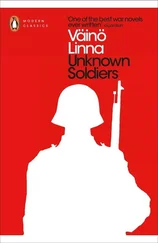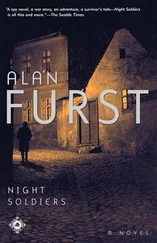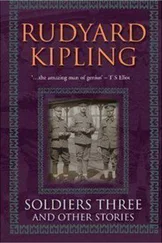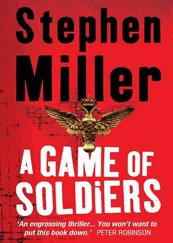Stephen Ambrose - Citizen Soldiers [Condensed]
Здесь есть возможность читать онлайн «Stephen Ambrose - Citizen Soldiers [Condensed]» весь текст электронной книги совершенно бесплатно (целиком полную версию без сокращений). В некоторых случаях можно слушать аудио, скачать через торрент в формате fb2 и присутствует краткое содержание. Жанр: История, на английском языке. Описание произведения, (предисловие) а так же отзывы посетителей доступны на портале библиотеки ЛибКат.
- Название:Citizen Soldiers [Condensed]
- Автор:
- Жанр:
- Год:неизвестен
- ISBN:нет данных
- Рейтинг книги:5 / 5. Голосов: 1
-
Избранное:Добавить в избранное
- Отзывы:
-
Ваша оценка:
- 100
- 1
- 2
- 3
- 4
- 5
Citizen Soldiers [Condensed]: краткое содержание, описание и аннотация
Предлагаем к чтению аннотацию, описание, краткое содержание или предисловие (зависит от того, что написал сам автор книги «Citizen Soldiers [Condensed]»). Если вы не нашли необходимую информацию о книге — напишите в комментариях, мы постараемся отыскать её.
Citizen Soldiers [Condensed] — читать онлайн бесплатно полную книгу (весь текст) целиком
Ниже представлен текст книги, разбитый по страницам. Система сохранения места последней прочитанной страницы, позволяет с удобством читать онлайн бесплатно книгу «Citizen Soldiers [Condensed]», без необходимости каждый раз заново искать на чём Вы остановились. Поставьте закладку, и сможете в любой момент перейти на страницу, на которой закончили чтение.
Интервал:
Закладка:
Patton inspected a command pillbox: "It consisted of a three-storey submerged barracks with toilets, shower baths, a hospital, laundry, kitchen, storerooms, and every conceivable convenience plus an enormous telephone installation. Electricity and heat were produced by a pair of diesel engines with generators. Yet the whole offensive capacity of this installation consisted of two machine guns operating from steel cupolas which worked up and down by means of hydraulic lifts. As in all cases, this particular pillbox was taken by a dynamite charge against the back door." To Patton, this was yet another proof of "the utter futility of fixed defences. In war, the only sure defence is offence, and the efficiency of offence depends on the warlike souls of those conducting it."
That point was equally true when applied to the Atlantic Wall. At the Siegfried Line in February, as at the Atlantic Wall in June 1944, the Germans got precious little return on their big investment in poured concrete.
LIEUTENANT John Cobb, 82nd Airborne, had arrived in France on January 1. By the end of January, he was a veteran. On February 8 his platoon was to accompany a squad of engineers using mine detectors to clear a trail across the Kail River valley.
The site had been the scene of a battle in November in which a battalion of the 28th Division took a terrible pounding. Cobb's was the first American unit to move back into the valley, dubbed by the 28th "Death Valley." Cobb described what he saw: "Immobile tanks and trucks and the bodies of dead American soldiers were everywhere. The snow and cold had preserved the dead and they looked so life-like it was hard to believe they had been dead for three months. It was as if a snap-shot of a deployed combat unit had been taken, with everything as it was at a given moment in the past. The command posts, the medical aid station with men still lying on their stretchers, and the destroyed supply trucks were all in their proper places just as if someone had set up a demonstration from the field manual-but the actors were all dead."
By February 8, Ninth Army, north of Aachen, had gotten through the Siegfried Line and closed to the Rur, but it could not risk an assault across the river so long as the Germans held the upstream dams. First Army, meanwhile, was working its way through the Line south of Aachen. On the tenth, V Corps won control of the dams, only to discover that the Germans had wrecked the discharge valves, thus creating a steady flooding that would halt Ninth Army until the waters receded.
While they waited, the GIs sent out reconnaissance patrols and practised river crossings. For Company K, in the centre of Ninth Army's front, that meant sending squads at night in rubber boats over the flooding Rur. Engineers worked with the infantry on assault-boat training and demonstrated the use of pontoons, rafts, smoke generators, and how to shoot communication wire across the river with rockets and grenade launchers.
D-day was February 23. After dark on the 22nd, tanks drove to the river's edge. Engineers lugged the 400-pound assault boats through deep mud to assembly areas. Huge trailer trucks with girders and pontoons for the heavy-duty bridges ground forward to final staging areas. In the 29th Division the shivering men gathered beside the boats to huddle together in the mud and water.
The river was two- to four-metres deep, 300 to 400 metres wide, with currents running more than ten kilometres per hour. On the German side the banks were heavily mined from the river to the trench system that commanded the river. Conditions were similar along the whole stretch of the Rur.
At 0245, February 23, the Rur River line, 35 kilometres long, burst into fire. It was one of the heaviest barrages of the war-every weapon the Americans had, hurled against the enemy; a 45-minute deluge of bullets and high explosives designed to stun, kill, or drive him from his position. Ninth Army alone had more than 2,000 artillery pieces firing 46,000 tons of ammunition.
"In the middle of it all," a lieutenant in the 84th wrote, "a lone German machine gunner decided he'd had enough. He fired a long burst of tracers at his tormentors. It was his last mistake. Every tank, every antiaircraft gun, every machine gunner within range returned the fire. Waves of tracers and flat trajectory rounds swept towards the hole, engulfing it in a single continuous explosion. We cheered lustily, and Captain George Gieszl commented, 'Now that's an awfully dead German.'"
At 0330 the first assault waves shoved their boats into the river. In the 84th, assault companies had several boats overturn, but most of the men swam to the enemy banks, many without weapons (there were only thirty rifles in one 130-man company). The troops moved inland. Behind them engineers worked feverishly to build footbridges and to get a cable ferry anchored on the far bank. By 0830 the job was done, and ammunition, supporting weapons, and communication wire were ferried across. By 1030 elements of the assault companies had entered the town of Dtiren.
By the end of February 24 the engineers had treadway bridges over the Rur, allowing tanks and artillery to join the infantry on the east bank. K Company crossed on a narrow swaying footbridge that night. It beat swimming, but it wasn't easy. The men had 30 or 40 pounds of gear. Half the duckboards were under water, and there was a single strand of cable for a handhold. The Germans were pumping in artillery, close enough to be disconcerting. Sergeant George Lucht recalled his dash across the bridge:
"The Germans had regrouped and their artillery was falling on both sides of the river, and I was thinking. Boy, this is just like Hollywood."
Once over the Rur there was open, relatively flat ground between the Americans and the Rhine. It was the most elementary military logic for the Germans to fall back. Why defend a plain that had no fortifications when Germany's biggest river was at your back? Yet that is what everyone knew Hitler would do-and Hitler did. He ordered his army to stand and fight. As it had neither fixed positions nor a river line for defensive purposes, the men should utilize the villages as strongpoints. These were villages inhabited by loyal Germans. When the 5th Division got into one of them, there were signs painted on the walls which said: SEE GERMANY AND DIE, ONWARD SLAVES OF MOSCOW, and DEATH WILL GIVE YOU PEACE.
Those signs didn't stay up long, because the walls came tumbling down. The GIs used the techniques of street fighting that they had learned in the fall of 1944. The most important things were to stay off the streets and "keep dispersed, move fast, and keep on moving whatever happens," one veteran explained. "Keep your head up and your eyes open and your legs moving."
THROUGH February, Patton attacked, whatever the conditions. He was at his zenith. His energy, his drive, his sense of history, his concentration on details while never losing sight of the larger picture combined to make him the preeminent American army commander of the war. He was constantly looking for ways to improve. For example, he ordered all Sherman tanks in his army to have two and a half inches of armour plate, salvaged from wrecked tanks, put on the forward hull of the tanks-and was delighted with the results; for the first time, a Sherman could take a direct hit from an 88 and survive. He also had flamethrowers mounted on the tanks, using the machine-gun aperture-and again was delighted with the results. They were highly effective against pillboxes.
Patton's worst enemy was the weather and what it did to the roads. The nightly freezes, the daily thaws, and the heavy traffic combined to make them impassable. Patton at one point in early February was forced to turn to packhorses to supply the front line. Still he said attack.
On February 26 elements of Third Army captured Bitburg. Patton entered the town from the south while the fighting was still going on at the northern edge of town. About this time Patton was spending six hours a day in an open jeep inspecting, urging, prodding, demanding. He crossed the Sauer River on a partly submerged footbridge, under a smoke screen (from which emerged another Patton legend, that he had swum the river).
Читать дальшеИнтервал:
Закладка:
Похожие книги на «Citizen Soldiers [Condensed]»
Представляем Вашему вниманию похожие книги на «Citizen Soldiers [Condensed]» списком для выбора. Мы отобрали схожую по названию и смыслу литературу в надежде предоставить читателям больше вариантов отыскать новые, интересные, ещё непрочитанные произведения.
Обсуждение, отзывы о книге «Citizen Soldiers [Condensed]» и просто собственные мнения читателей. Оставьте ваши комментарии, напишите, что Вы думаете о произведении, его смысле или главных героях. Укажите что конкретно понравилось, а что нет, и почему Вы так считаете.
![Stephen Ambrose Citizen Soldiers [Condensed] обложка книги](/books/346737/stephen-ambrose-citizen-soldiers-condensed-cover.webp)








